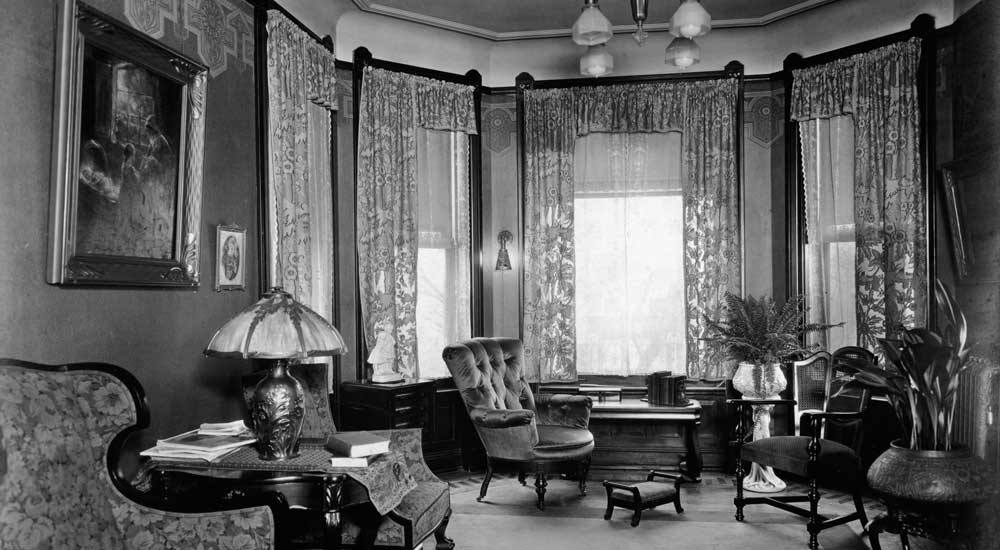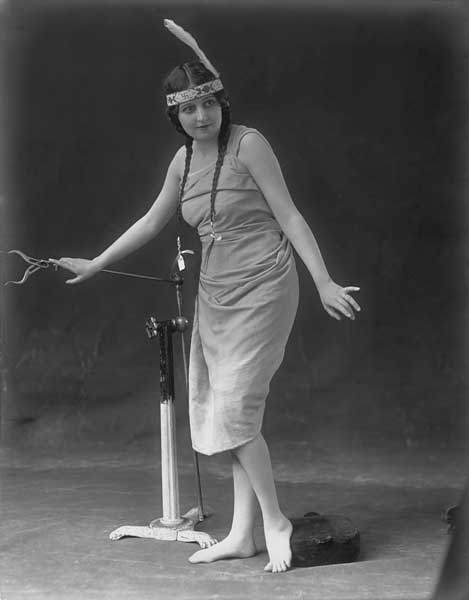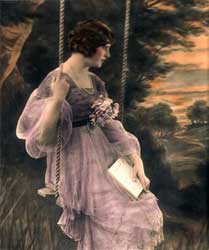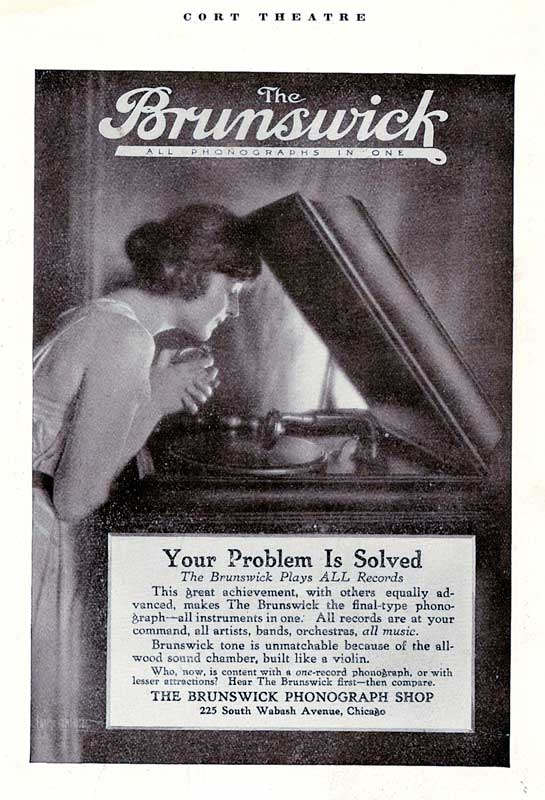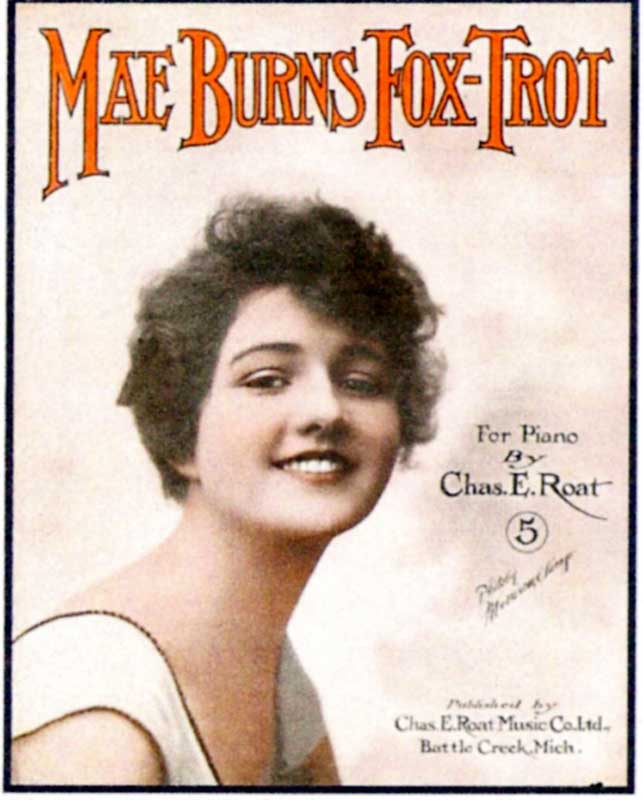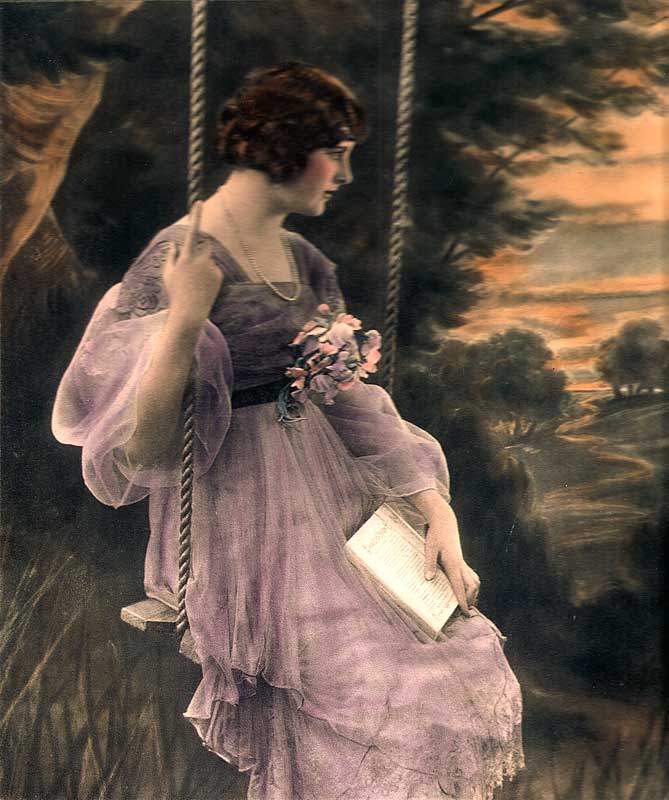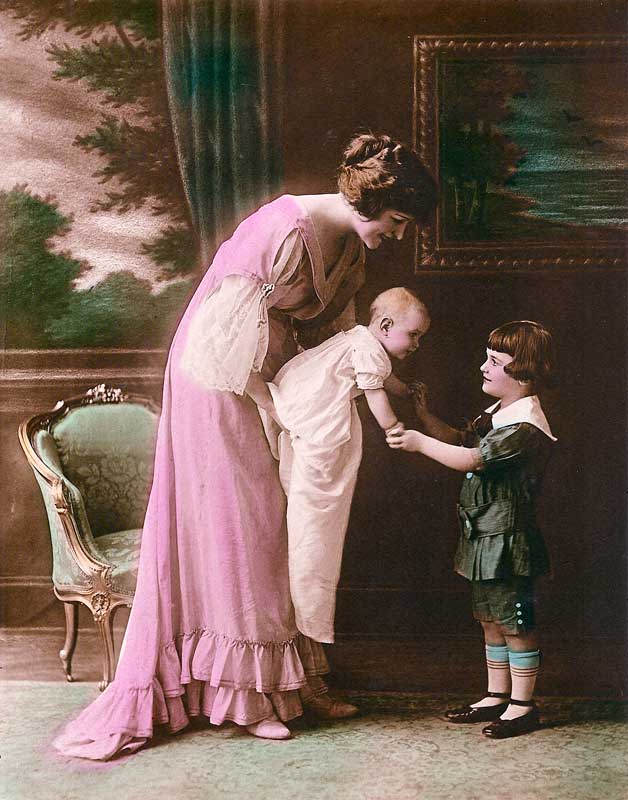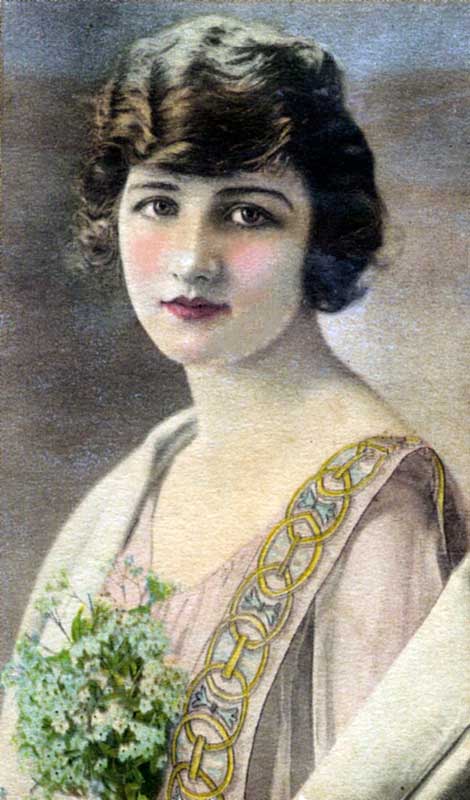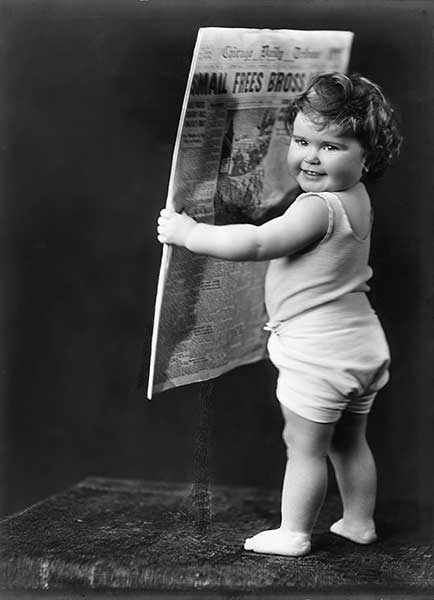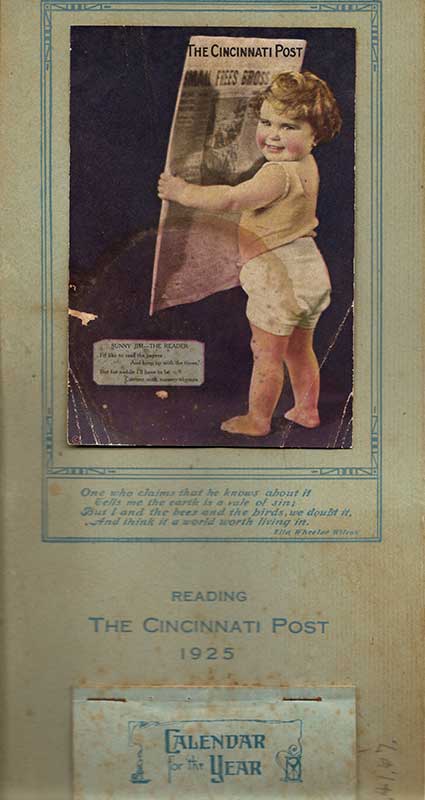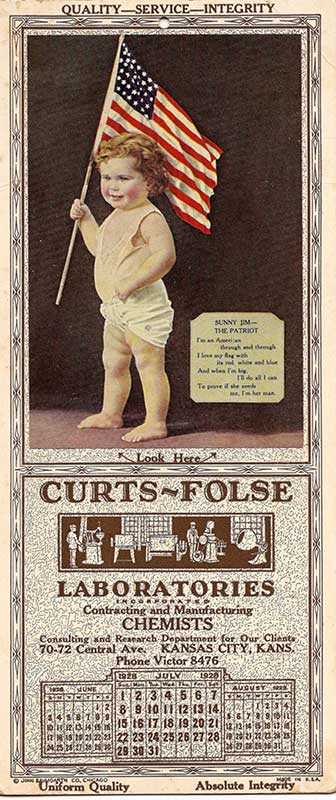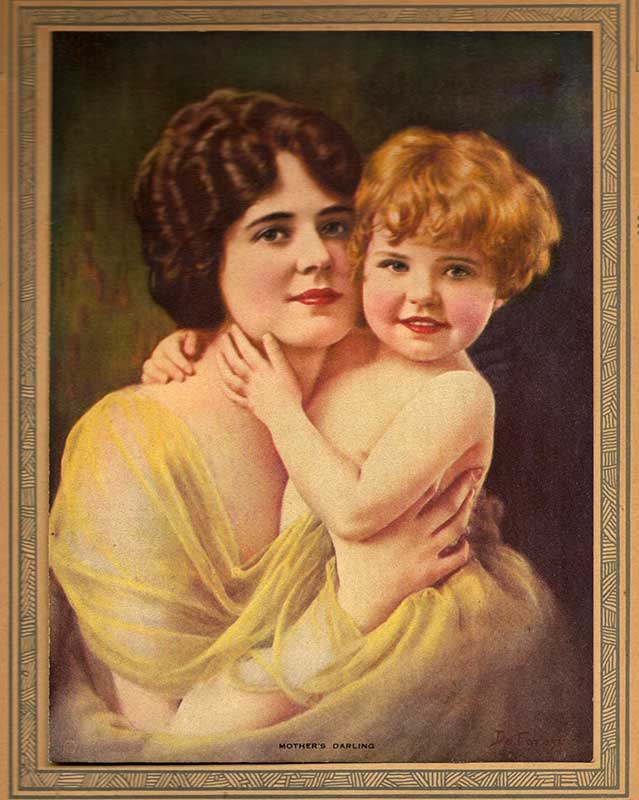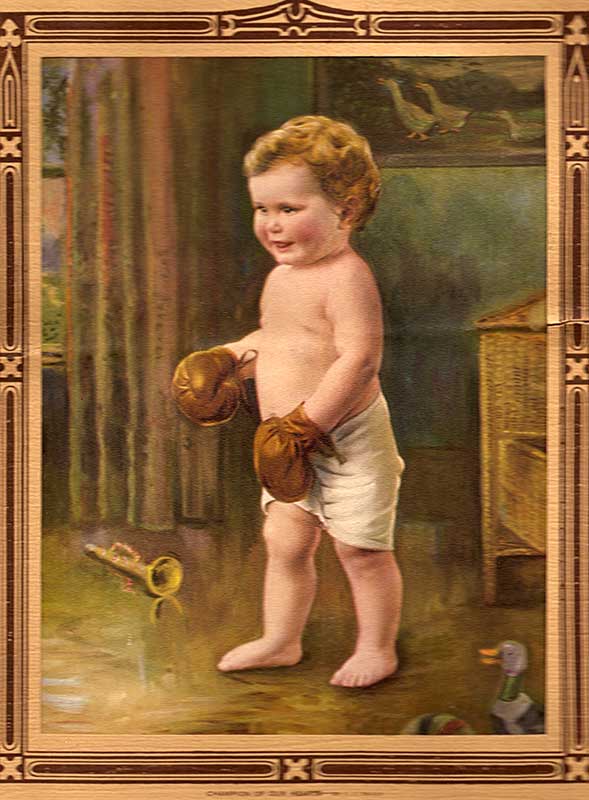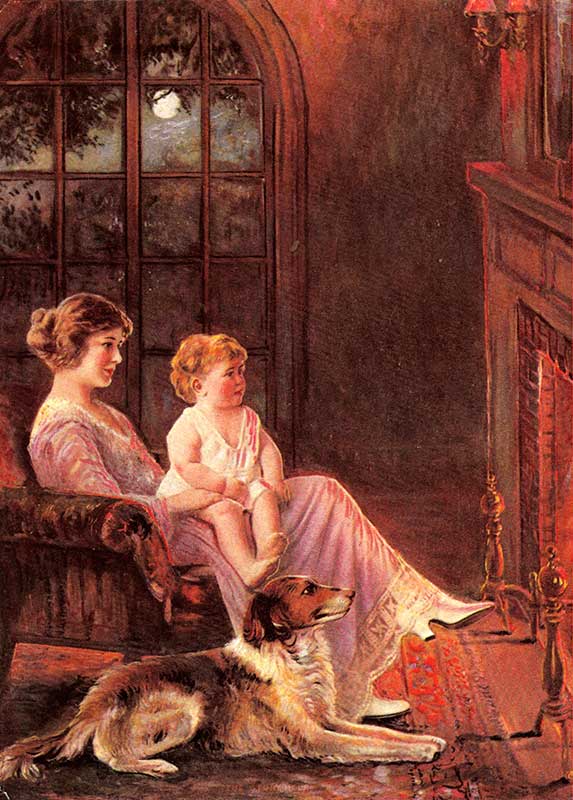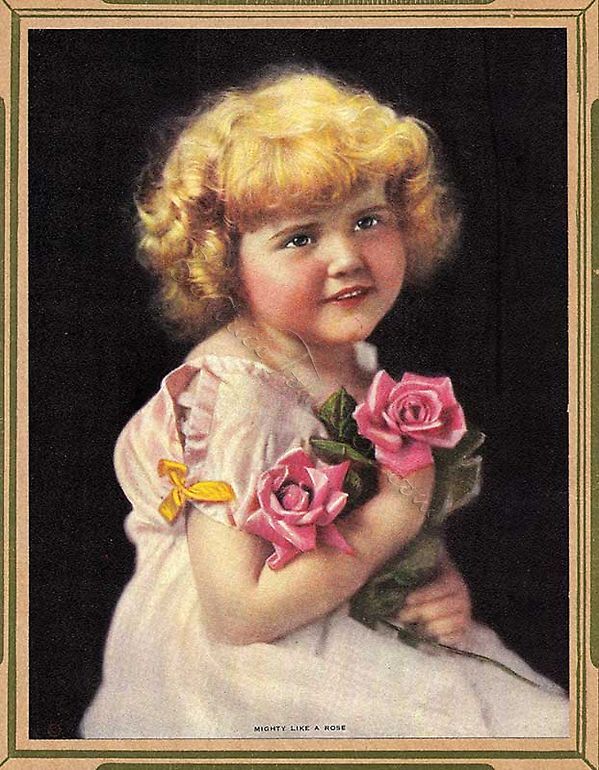Back in 2009, an original photo by Beatrice Tonnesen was discovered at the Winneconne Historical Society in Winneconne, WI. The photo showed a beautiful dark-haired woman dressed as an Indian maiden. I recognized the image as one titled “Dawn of Woman” and attributed to illustrator Homer Nelson in a book about vintage calendar illustration. The find at Winnecone proved that Nelson had painted from a photo by Tonnesen. Unfortunately, I did not have Nelson’s print in my collection, so the only way to show the image on this blog was to post the small black and white picture that was shown in the book.
Then, in 2010, I found three photos of a Chicago beauty queen, Mary Simmonds (1895 – 1976), as shown in 1921 in The Chicago Tribune in an online archive. The images were not the best, but they were good enough to cause me to speculate that Simmonds had modeled for the Tonnesen photo that became Nelson’s “Dawn of Woman.” So, I posted them.
And that was that, until recently, when I found and purchased a 1925 calendar with an original color print of “Dawn of Woman.” Then, a few weeks later, while cleaning my hobby room, I discovered that I had an original issue of a 1921 Chicago Tribune showing two very clear images of the same photos of Mary Simmonds! I had bought a stack of 1920’s papers years ago, and I guess I never really looked through them! I’ve now scanned both the original calendar and the original newspaper photos and am thrilled to be able to share them in the slideshow at right.
Seeing these originals has made me even more inclined to believe that Mary Simmonds portrayed this Indian maiden. I also believe she was the model for another beautiful Indian maiden print titled “Whispering Waters,” signed by Beatrice Tonnesen and shown in Album 1 of the Tonnesen Catalogue on this blog. Census information shows that Simmonds married James O’Grady in November of 1921 and remained in Chicago, raising eight sons. This gives me hope that there are some O’grady relatives out there somewhere, with some photos by Tonnesen as mementoes of their ancestor’s career!
For more on “Dawn of Woman,” including an image of Tonnesen’s original black and white photo, and on Mary Simmonds, see our two previous posts: June 8, 2009 “Homer Nelson Print Features Tonnesen’s Indian Maiden,” and June 26, 2010 “Indian Maiden May Have Been Chicago Beauty Queen.”
Copyright 2012 Lois Emerson
